Analyzing NATO’s Deterrence and Defense Strategies amidst Global Security Challenges
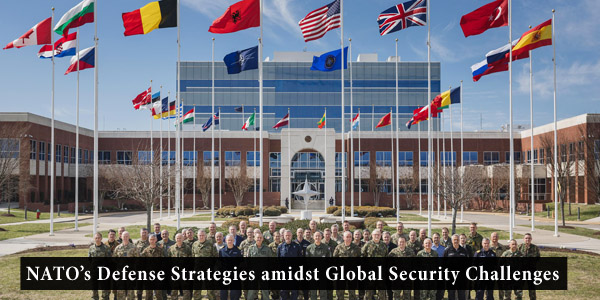
Amidst growing geopolitical tensions and evolving global security challenges, the NATO countries increased their defense spending in 2023 and deepened cooperation to strengthen collective defense.
NATO’s latest annual report 2023 has unveiled striking insights of North Atlantic Treaty Organization (NATO) member states in 2023. NATO Secretary General Jens Stoltenberg unveiled that the NATO allies spent an estimated $1.1 trillion on defense in 2023. However, it also raises concerns about the equitable distribution of defense burdens within the alliance, with only 11 out of the 31 member states meeting the established target of allocating 2% of their GDP to defense expenditures during the same period in 2023.
According to the NATO report, Russia’s invasion of Ukraine and the ongoing security crisis in the Middle East had pushed the NATO allies to reformulate their defense strategy and increase defense investments while strengthening their mutual partnerships. The report indicated that NATO has grown bigger and more capable in 2023 after Finland became the newest member of the Alliance. Sweden also joined the alliance at the start of 2024 after decades of neutrality.
NATO chief Jens Stoltenberg said, “We continued to strengthen. At our Summit in Vilnius, we agreed on robust new plans to defend every inch of Alliance territory. These plans are backed by hundreds of thousands of troops and highly capable air and naval forces at a high state of readiness – and with eight battlegroups on our eastern flank, stretching from the Baltic to the Mediterranean Sea, scalable to brigade size.”
NATO Defense Expenditure
NATO released a report on defense spending from 2014 to 2023 which indicated an unprecedented increase in military expenditure by European Allies and Canada. In February 2024, Stoltenberg announced that “European Allies and Canada have added more than $600 billion” for defense since the Defense Investment Pledge was made in 2014. He said, “In 2024, NATO Allies in Europe will invest a combined total of 380 billion U.S. dollars in defense. For the first time, this amounts to 2% of their combined GDP.”
According to the NATO secretary general, “We agreed at the Vilnius Summit that all Allies should invest 2% and that 2% is a minimum.” Stoltenberg said, although some Allies are still lagging, most of the members are making real progress and European Allies are spending much more compared to the past.
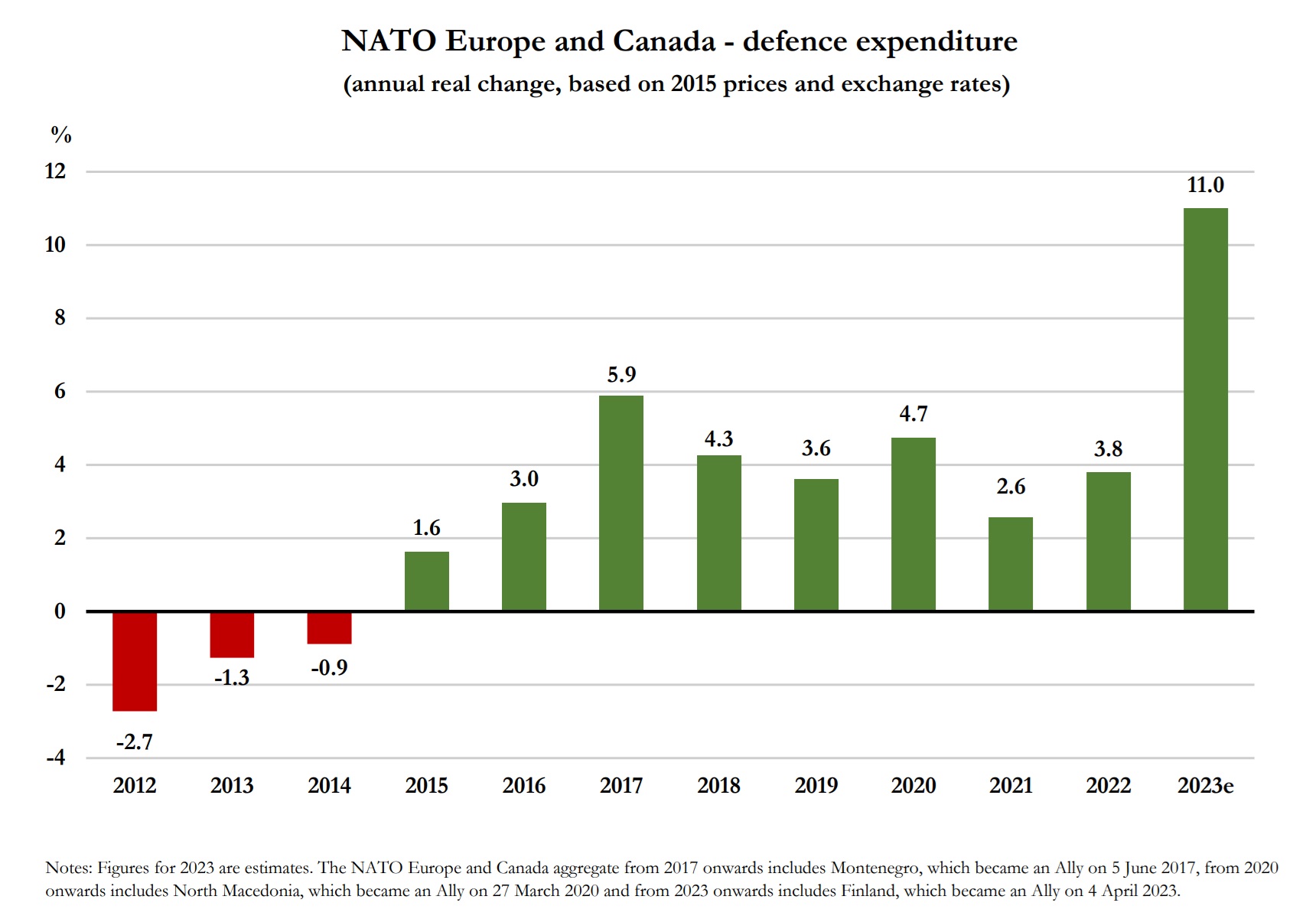
The main part of the defense spending focused on payments for Armed Forces of NATO member states which was financed from within the budget of the Ministry of Defense. The NATO report clarified that "Armed Forces include Land, Maritime and Air forces as well as Joint formations such as Administration and Command, Special Operations Forces, Medical Service, Logistic Command, Space Command, Cyber Command, etc."
The NATO defense expenditure also included spending on Research & Development, mixed military-civilian activities, NATO common infrastructure, and retired military and civilian members of defense departments of NATO members.
The defense spending also included peacekeeping and humanitarian operations, the destruction of weapons, equipment, and ammunition, as well as contributions to eligible NATO-managed trust funds, and the costs associated with inspection and control of equipment destruction. The report highlighted that war damage payments and spending on civil defense were both excluded from the defense spending.
The geographical position of a NATO member played an important role in determining the increase in its defense spending, particularly against the backdrop of the ongoing Russia-Ukraine war. With the U.S., UK, and Greece being exceptions, most of the NATO member states that saw an exponential increase in their defense spending were either former Soviet Union states or countries in the close geographical vicinity of Russia.
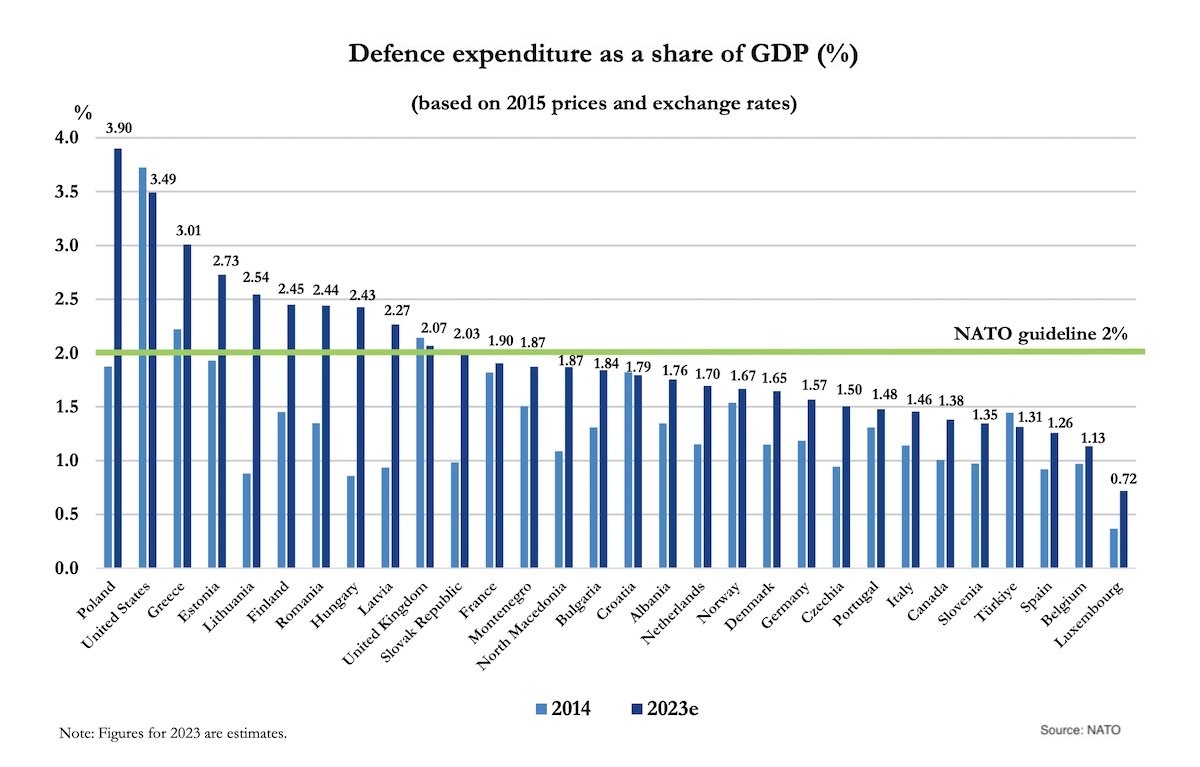
Hungary, Lithuania, Estonia, Poland, Latvia, Slovakia, and Romania were among the European NATO member states that reached the minimum defense spending threshold. For the first time in NATO’s history, Poland become the only European country that is expected to take over the U.S. in terms of defense spending compared to its GDP. In real terms, however, Poland’s defense spending remains much different than the U.S. which spent $860 billion in defense expenditure.
Defense spending and the Alliance’s ever-increasing demands for minimum spending thresholds have been a source of debate of among the member states for decades. Substantial progress was made in this regard at the NATO Summit in Vilnius in 2023 to help the weaker economies catch up in defense spending. NATO’s increased focus on pushing Allies to spend at least 20% of its defense budget on major defense equipment has raised further debates among the allies on the beneficiaries of such policies. Despite facing a domestic backlash, several governments of the NATO member countries are determined to overhaul their military outlook amid the changing security environment.
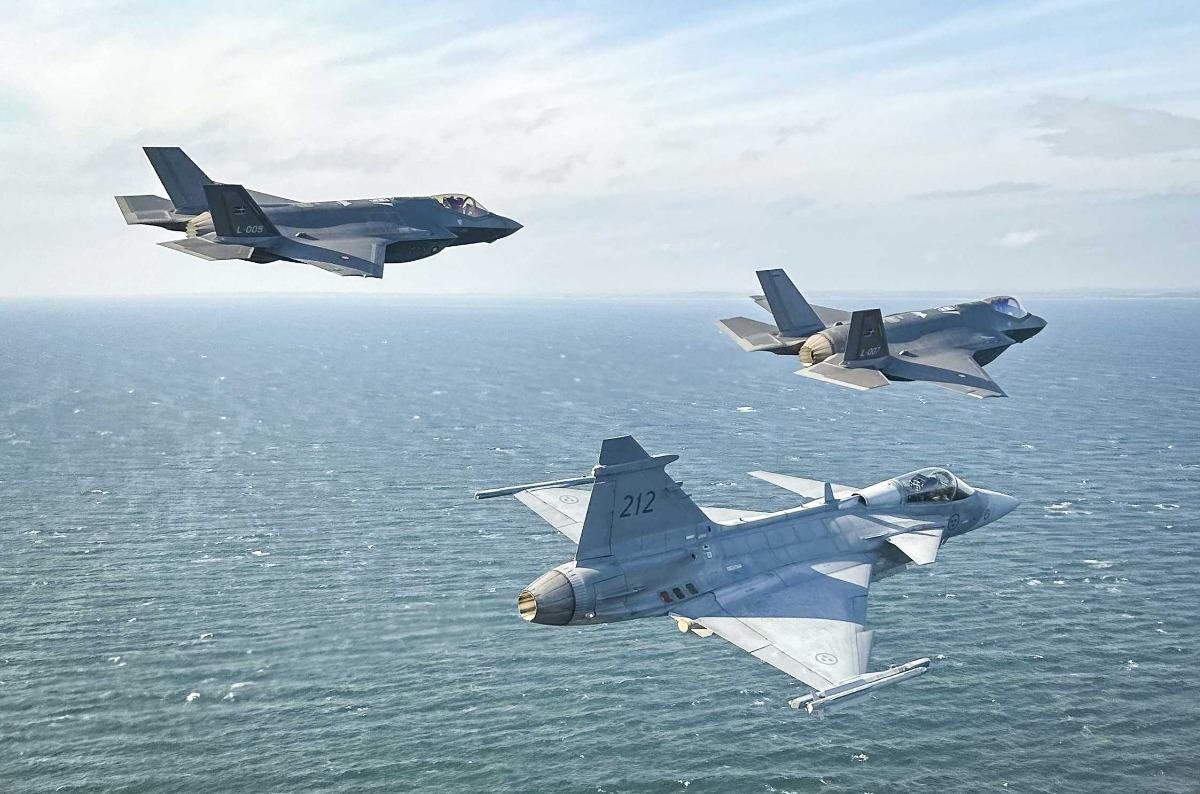 Training drills involving the Swedish-produced JAS-39 and the American-produced F-35 underlined the need to ensure existing and new combat aircraft fleets cooperate and interact on the modern battlefield. (Image Credit: Swedish Air Force)
Training drills involving the Swedish-produced JAS-39 and the American-produced F-35 underlined the need to ensure existing and new combat aircraft fleets cooperate and interact on the modern battlefield. (Image Credit: Swedish Air Force)
Support for Ukraine
Ukraine "is at a critical moment and letting Putin win by not supplying Kyiv with enough armaments would be a historic mistake on NATO's part," Jens Stoltenberg stated during the presentation of the 2023 annual report of the Atlantic Alliance. “The unprecedented support of NATO allies has helped Ukraine survive as a sovereign and independent nation” but Kyiv “needs even more support, and it needs it now,” Stoltenberg warned at a press conference in Brussels.
In unusually blunt comments about the state of the war, Stoltenberg said NATO allies could provide more to Ukraine but needed to show the political will to do so. "Unprecedented aid from NATO allies has helped Ukraine survive as an independent nation. But Ukraine needs even more support and they need it now," Stoltenberg highlighted during a press briefing at NATO headquarters in Brussels as he unveiled his annual report for 2023.
Although NATO, in its organizational capacity, does not provide weapons to Ukraine, however, the NATO leadership facilitates and encourages its member states to provide weapons to Ukraine.
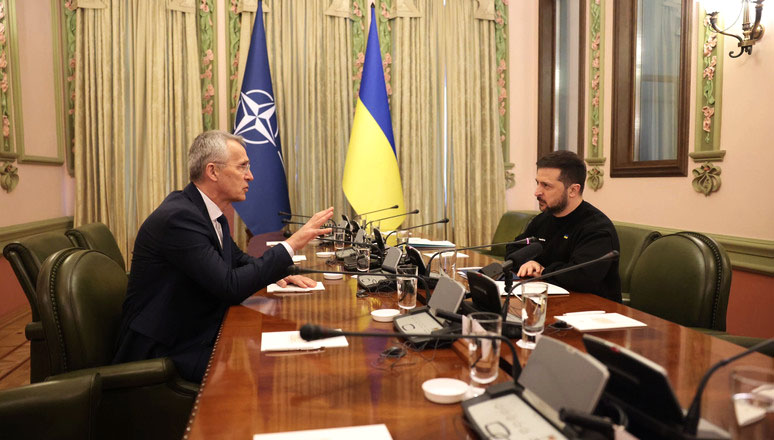 NATO Secretary General Jens Stoltenberg meets with the President of Ukraine Volodymyr Zelenskyy in Kyiv, Ukraine, on April 20, 2023. (Image Credit: NATO)
NATO Secretary General Jens Stoltenberg meets with the President of Ukraine Volodymyr Zelenskyy in Kyiv, Ukraine, on April 20, 2023. (Image Credit: NATO)
NATO Allies have launched a multi-year program to assist Ukraine by delivering immediate assistance needs for the war and expanding support under NATO’s Comprehensive Assistance Package for Ukraine. The Allies are also undertaking long-term projects aimed at assisting Ukraine with its post-war recovery, mainly including recovery and reconstruction, institutional transformation, and transitioning Ukraine towards interoperability with NATO.
According to the NATO report, the Alliance’s multi-year package is focused on the following priorities:
1) Increasing interoperability with Ukraine;
2) Establishing a NATO-Ukraine Joint Allied Training and Education Centre;
3) Rebuilding damaged military infrastructure (including three training sites);
4) Clearing mines on Ukrainian territory and strengthening Ukraine’s own demining capabilities;
5) Facilitating defense procurement reform;
6) Rehabilitation of injured veterans and reintegration of veterans into civilian life.
In 2023, NATO’s Comprehensive Assistance Package and its Trust Fund facilitated the delivery of non-lethal material aid worth more than $127 million (€117 million) to Ukraine. An additional €117 million worth of material aid is currently under contract and will soon be dispatched to Ukraine.
The NATO report highlighted that in 2023 the Allies delivered various forms of aid to Ukraine including fuel, medical kits, Starlink satellite communication systems, shelters, power generators, bridging systems, counter-drone systems, and chemical, biological, radiological, and nuclear protective equipment. NATO Allies also provided Ukraine with $10.9 million (€10 million) worth of clothing and medical supplies.
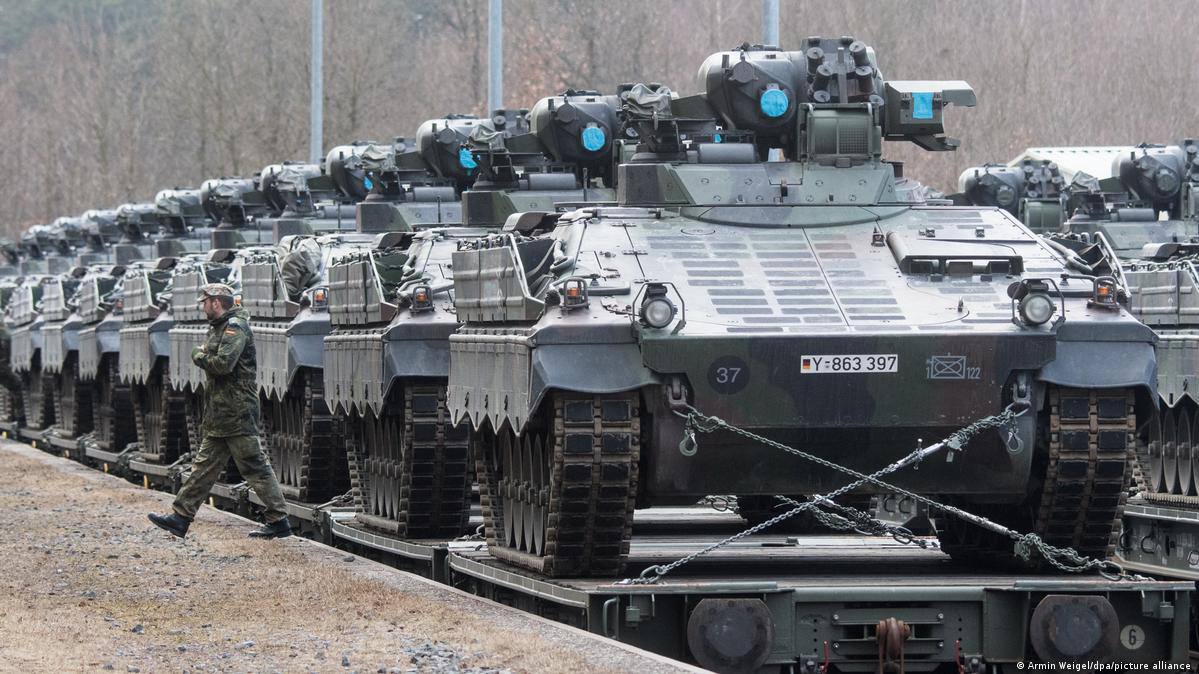 German Marder infantry fighting vehicles on their way to Ukraine. (Image Credit: Twitter/@UkraineInTouch)
German Marder infantry fighting vehicles on their way to Ukraine. (Image Credit: Twitter/@UkraineInTouch)
Furthermore, the Comprehensive Assistance Package continued to oversee NATO's medium- and long-term assistance to Ukraine. These efforts, spanning two to five years for completion, aim to support Ukraine in transitioning its defense and security sector from Soviet-era systems to NATO standards. These aid projects are developed in close collaboration with Ukraine and executed with significant financial and political backing from Allies and partners.
Expanding Partnerships
In NATO Annual report, Jens Stoltenberg emphasized the importance of maintaining a strong partnership with non-NATO countries amid the complex and unpredictable security landscape. The report highlighted that NATO maintains active partnerships with 35 countries globally, along with several international organizations. These partnerships entail various core activities, including expertise sharing, capacity building, fostering interoperability, and aiding in crisis prevention and management.
In 2023, 18 partners participated in 16 NATO-led exercises, while 11 contributed more than 30 military personnel to the NATO Command Structure and International Military Staff. Additionally, partners provided support to NATO missions in Iraq and Kosovo, financially contributed to NATO-led Trust Funds, and extended in-kind support through NATO’s Partnership Training and Education Centers.
The NATO report also stressed that the NATO membership door remains “open to any European democracy able to further the principles of the North Atlantic Treaty – individual liberty, democracy and the rule of law – and to contribute to the security of the North Atlantic area.” In light of this, NATO allies in their Vilnius Summit Communique supported Ukraine's future NATO membership. The Vilnius Summit Communique also reiterated support for the future NATO membership of other regional allies including Georgia and Bosnia and Herzegovina.
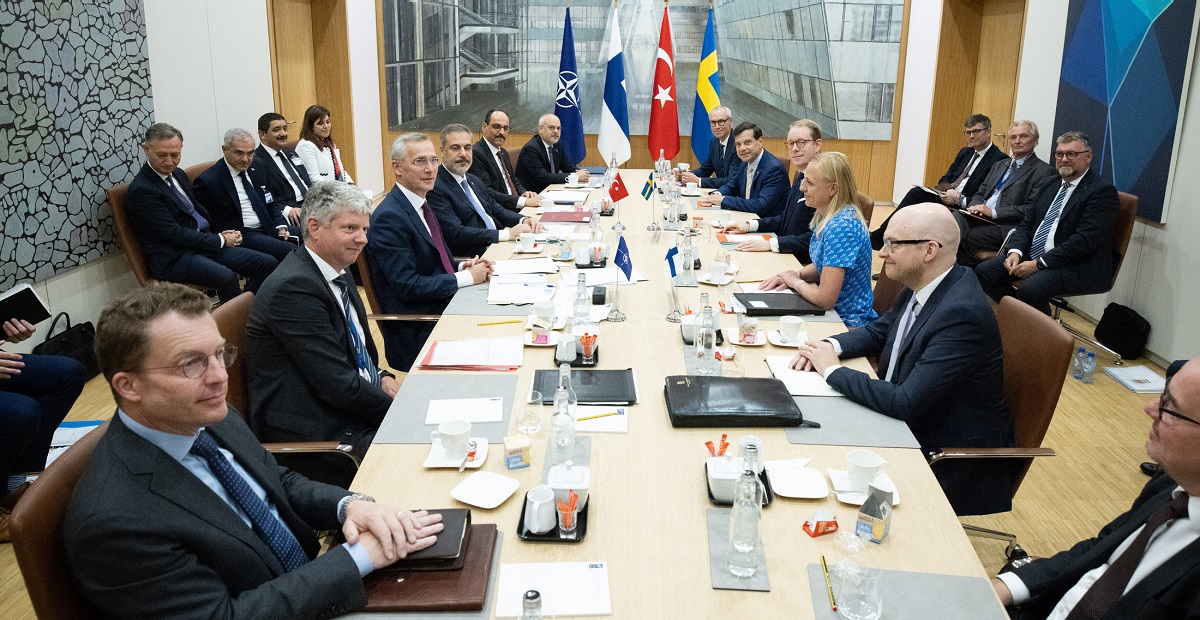 NATO Secretary General Jens Stoltenberg hosted a meeting between Sweden, Finland, and Turkey on July 6, 2023. (Image Credit: NATO)
NATO Secretary General Jens Stoltenberg hosted a meeting between Sweden, Finland, and Turkey on July 6, 2023. (Image Credit: NATO)
Finland and Sweden applied to become part of the NATO alliance shortly after the Russian invasion of Ukraine in 2022. Finland’s accession into the alliance was approved in April 2023. Finland shares one of the largest borders with Russia stretching up to 1,340 kilometers.
Historically, Finland has kept a policy of neutrality, however, this has not stopped the Scandinavian state from focusing on building up a strong military force and innovating new defense technologies. After joining the Alliance, Finland found itself among the group of NATO member states with defense spending meeting 2% of the GDP criteria.
The Russian invasion of Ukraine also pushed Stockholm to deviate from its decades-long policy of neutrality and join the largest military alliance. Although Sweden’s NATO bid initially faced some hindrances due to objections raised by Hungary and Turkey but the issues were resolved and Sweden became the 32nd member of the NATO alliance in March 2024.
NATO Alliance is also expanding partnerships with Indo-Pacific allies, particularly Australia, New Zealand, Japan, and South Korea. According to the NATO report, the developments in the Indo-Pacific region can directly affect Euro-Atlantic security. The NATO Allies and four Asia-Pacific partner nations have the common goal of upholding international law and international order, while Australia, Japan, and South Korea are also making significant contributions to NATO security through their support of Ukraine. The NATO alliance is focused on strengthening cooperation with Indo-Pacific partners on cyber defense, new technologies, maritime security, climate change, and countering disinformation.
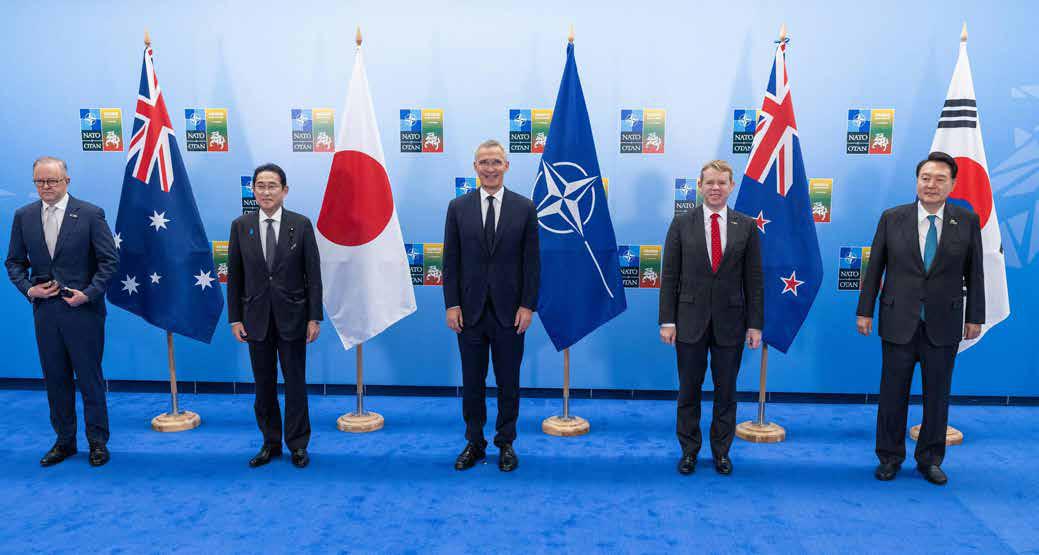 NATO Secretary General Jens Stoltenberg (centre) with the Heads of State and Government of NATO’s partners from the Indo-Pacific region: from left to right, Prime Minister of Australia Anthony Albanese, Prime Minister of Japan Fumio Kishida, Prime Minister of New Zealand Christopher Hipkins, President of the Republic of Korea Suk Yeol Yoon. Vilnius, Lithuania, July 2023. (Image Credit: NATO)
NATO Secretary General Jens Stoltenberg (centre) with the Heads of State and Government of NATO’s partners from the Indo-Pacific region: from left to right, Prime Minister of Australia Anthony Albanese, Prime Minister of Japan Fumio Kishida, Prime Minister of New Zealand Christopher Hipkins, President of the Republic of Korea Suk Yeol Yoon. Vilnius, Lithuania, July 2023. (Image Credit: NATO)
The NATO report highlighted that although the alliance “does not consider the PRC an adversary and remains open to constructive engagement... NATO’s Strategic Concept makes clear that Allies consider the PRC’s stated ambitions and coercive policies a challenge to Allied interests, security and values.”
According to the NATO Annual Report, the alliance is committed to addressing threats and challenges posed by China to NATO security and strengthening their resilience and preparedness to effectively counter China's “coercive tactics and efforts to divide the Alliance”. The NATO alliance is also increasingly concerned about China and Russia's alliance and calls on China to condemn Russia's “war of aggression” against Ukraine and play a constructive role as a permanent member of the United Nations Security Council.
NATO alliance is also increasing engagements with its Middle Eastern and North African partners on wide-ranging issues including security, crisis management, counter-terrorism, civil preparedness, small arms and light weapons, and countering improvised explosive devices.
The Annual report highlighted that "At the Vilnius Summit, NATO Heads of State and Government launched a reflection process on existing and emerging threats and challenges, and opportunities for engagements with partner nations, international organizations and other relevant actors in the Middle East and North Africa and Sahel regions." NATO Secretary General Stoltenberg also appointed an independent group of experts to reflect on the Alliance’s approach to its southern neighborhood and assist in guiding future decision-making.
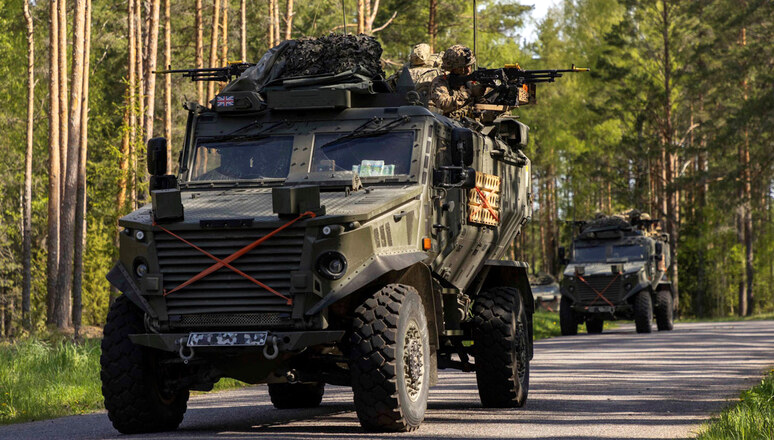 United Kingdom’s 7th Light Mechanized Brigade leading NATO’s Very High Readiness Joint Task Force. (Image Credit: NATO)
United Kingdom’s 7th Light Mechanized Brigade leading NATO’s Very High Readiness Joint Task Force. (Image Credit: NATO)
Perception on Security
Throughout 2023, NATO carried out surveys among 30,956 citizens in all NATO member states and Sweden, which at that time was not a formal member of the Alliance, to evaluate the perceptions of the citizens of the NATO member states regarding defense and security.
The results reveal a notable consensus from the citizens of the NATO member states on increasing defense spending. A report released by NATO shows a five percent increase in support for increasing defense spending. A majority of respondents from Allied nations also agree with their country's ongoing provision of support to Ukraine, accounting for an overall 63% approval for support.
The report also unveiled some interesting statistics that would be taken into account while developing the NATO defense policy of 2024 and onwards. The report showed that 77% of citizens of the NATO member states believe that their respective countries should increase their defense spending, while 61% of citizens agreed that their country should defend another NATO country if it is being attacked.
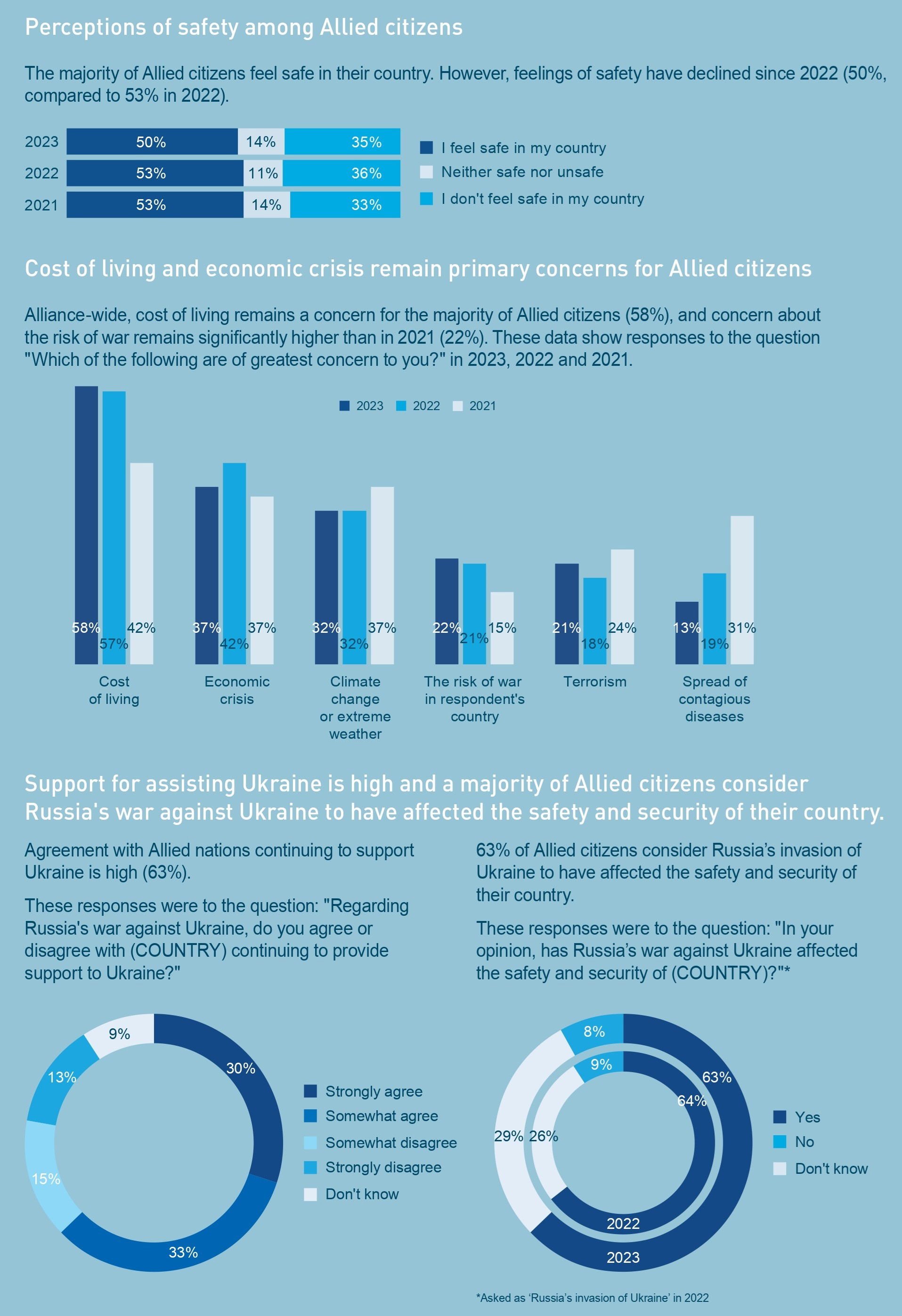 NATO Allied nations' perception of security. (Image Credit: NATO)
NATO Allied nations' perception of security. (Image Credit: NATO)
73% of the NATO citizens agreed that their country should be defended by NATO member states in case of an external attack. 66% of citizens of the NATO member states voted for their country to remain in Alliance while only 12% of the citizens voted to leave the alliance.
Distrust towards Russia remained the highest among the citizens with 62% of the respondents describing Moscow as unfavorable towards NATO. China was marked as the second most unfavorable nation for the NATO alliance as 42% of the respondents expressed unfavorable opinions towards China.
NATO Deterrence and Defense
The year 2023 witnessed significant modernization of NATO's plans, capabilities, and command structure. The Allies entered a new era of collective defense and implemented two major military concepts: the Concept for Deterrence and Defense of the Euro-Atlantic Area and the NATO Warfighting Capstone Concept.
NATO established eight fully operational multinational battlegroups in Bulgaria, Estonia, Hungary, Latvia, Lithuania, Poland, Romania, and Slovakia and deployed combat-ready forces in the eastern flank. The report highlighted that the Alliance's Integrated Air and Missile Defense remains crucial to NATO's efforts to deter and defend its territory, populations, and forces against all air and missile threats and from all strategic directions.
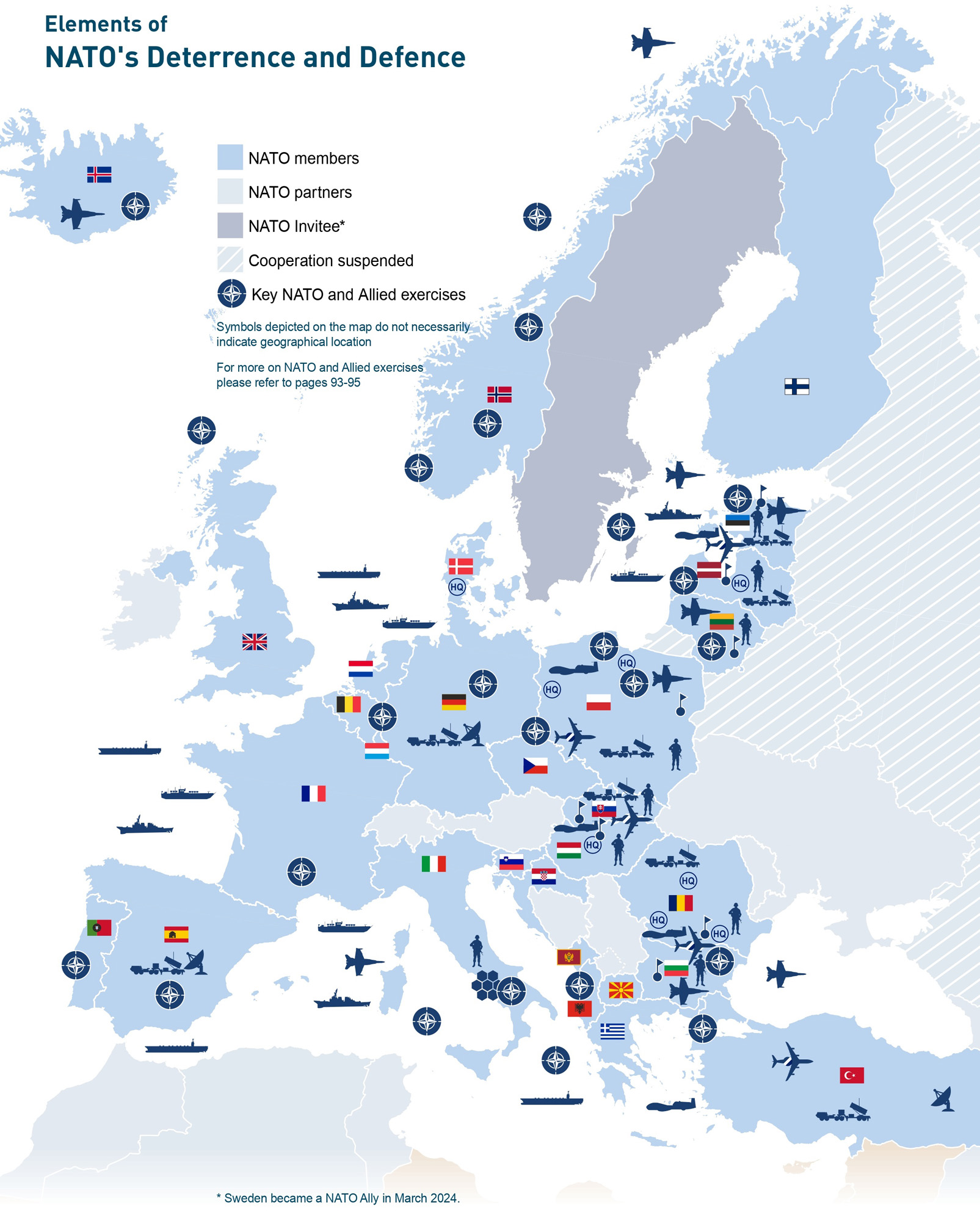 (Image Credit: NATO)
(Image Credit: NATO)
After Russia’s full-fledged invasion of Ukraine, NATO has reinforced its presence in the eastern part of the Alliance, with new multinational battlegroups, more air and maritime presence, and frequent surveillance flights. NATO’s deployment includes fighter jets, reconnaissance flights, and ground-based air defenses.
NATO drones have also intensified surveillance activities on the eastern flank to collect intelligence and support the defense of the Allies. NATO drone unit regularly operates its RQ-4D, high-altitude, long-endurance (HALE) unmanned aircraft, to conduct Intelligence, Surveillance, and Reconnaissance (ISR) missions.
NATO’s air policing mission focuses on monitoring “airspace violations, suspicious air activity close to the alliance’s borders, or other kinds of unsafe air traffic,” and fighter jets are tasked with responding urgently to any threat. It is a permanent peacetime mission of the Alliance, conducted within the NATO Integrated Air and Missile Defense framework and under the responsibility of the Supreme Allied Commander Europe (SACEUR).
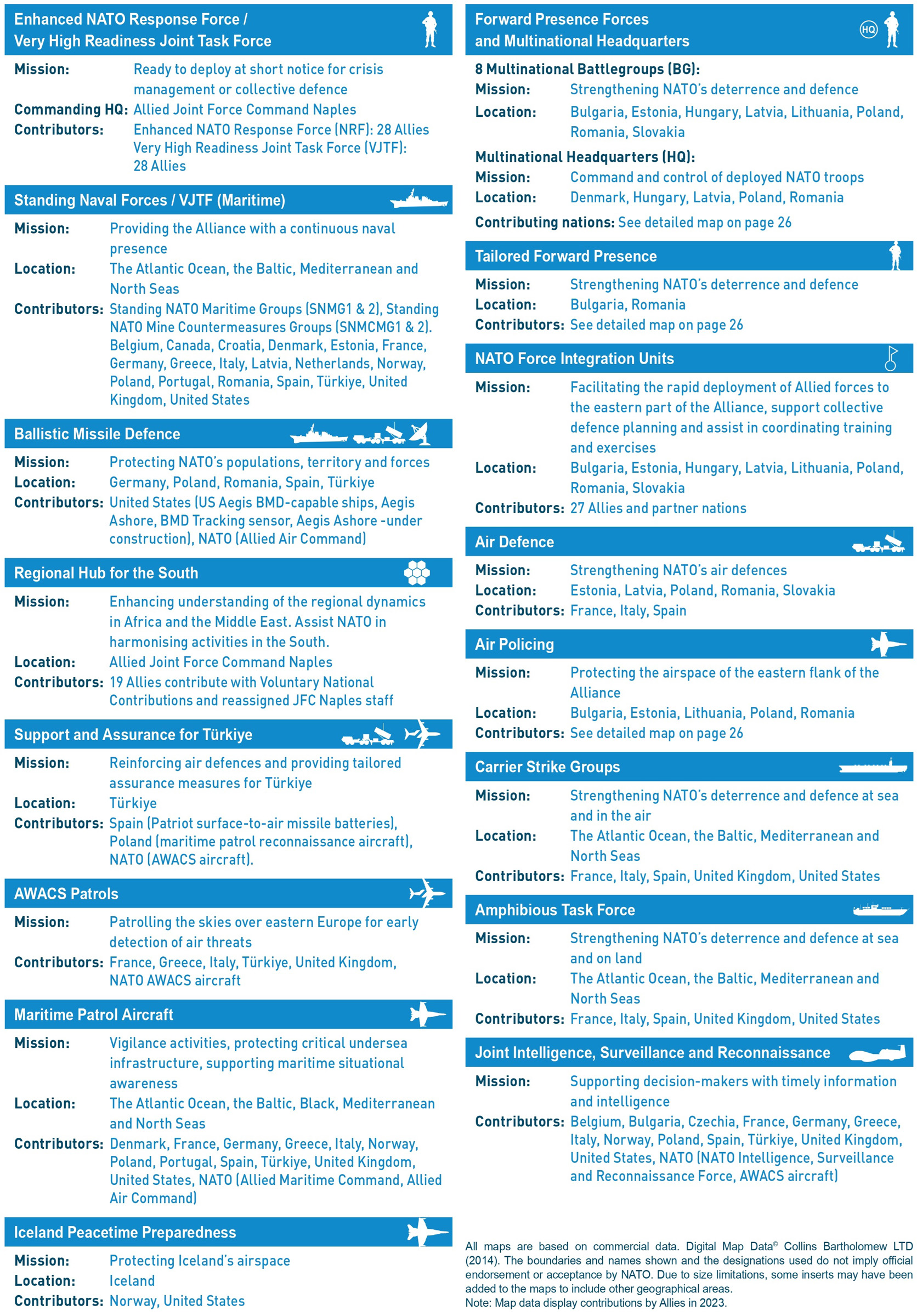 (Image Credit: NATO)
(Image Credit: NATO)
The air policing missions demonstrate unity among Allies and ensure the integrity of the airspace of member states. Several hundred F-16 jets are operating across Europe for air policing and several European partners including Romania, the Netherlands, Belgium, Denmark, Poland, Greece, and Turkey are using their F-16s to protect airspace and support integrated NATO peacekeeping missions.
In 2023, NATO defense leaders raised concerns about production capacity shortages that result in increased delivery times and prices for equipment and ammunition. NATO defense officials urged for a boost in defense production to ensure the supply of weapons and equipment. Since then, the Allies have taken several steps to replenish ammunition stocks and enhance military mobility. After endorsing the new Defense Production Action Plan at the Vilnius Summit, NATO’s Land Battle Decisive Munitions program is focused on increasing ammunition production and aggregating demand. The NSPA has agreed on contracts for about $10 billion worth of ammunition. In January 2024, the NATO Support and Procurement Agency (NSPA) announced $1.2 billion worth of contracts for buying 220,000 155mm artillery ammunition.
NATO’s Defense Production Action Plan aims to aggregate demand, address defense industrial capacity, and enhance interoperability and material standardization. NATO Allies are pacing efforts to increase ammunition stocks and seek to acquire a wide variety of critical munitions, including 155mm artillery shells, anti-tank guided missiles, and main battle tank ammunition. The NSPA has also approved purchases of 1,000 Patriot missiles for $5.5 billion, and 155-mm artillery, anti-tank guided missiles, and tank ammunition for $4 billion. In November 2023, NATO’s procurement agency also decided to purchase six E-7A Wedgetail aircraft.
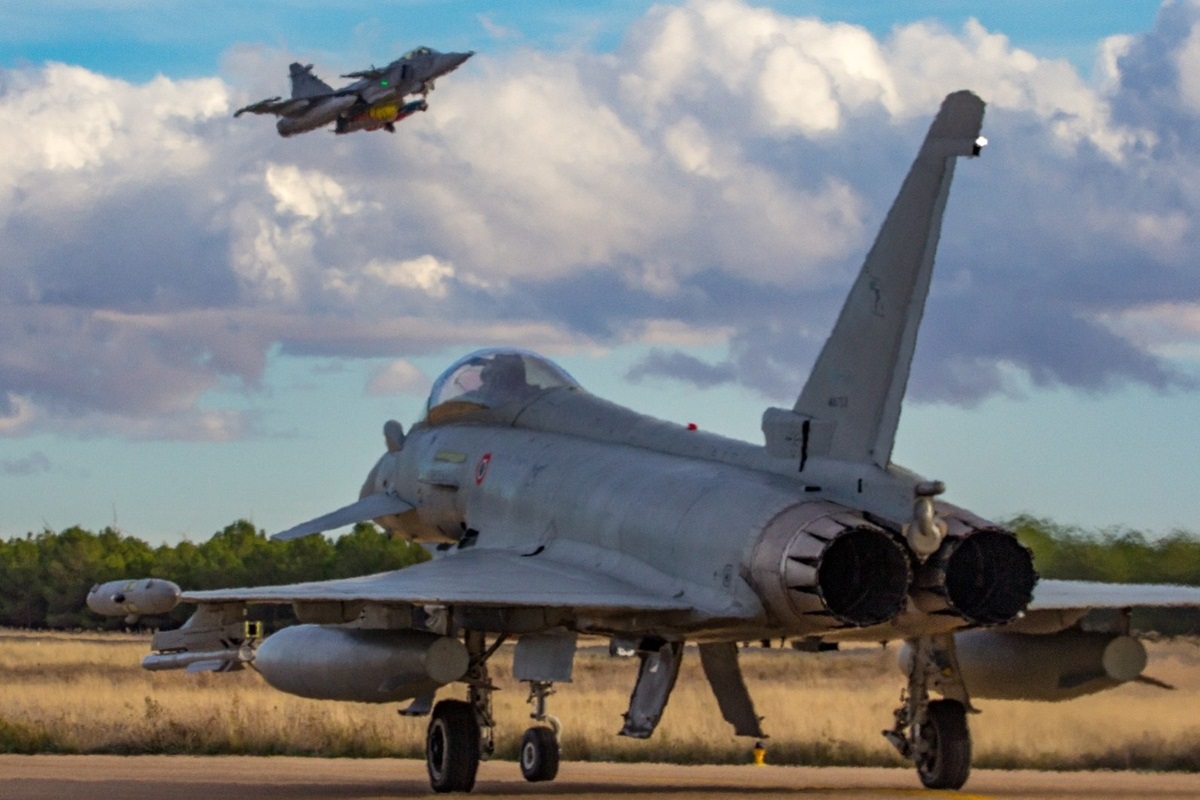 A Czech JAS-39 Gripen takes off as a Spanish Eurofighter taxies at Albacete Air Base in Spain during a multinational training according to NATO tactics, techniques and procedures. (Image Credit: Antonio Jiménez Santana/NATO AIRCOM)
A Czech JAS-39 Gripen takes off as a Spanish Eurofighter taxies at Albacete Air Base in Spain during a multinational training according to NATO tactics, techniques and procedures. (Image Credit: Antonio Jiménez Santana/NATO AIRCOM)
The Allies are also working to maximize the executability of the new military plans and the Allied Reaction Force serves as a critical component of NATO’s new force model which supports revised defense plans. NATO Military Committee Chair Admiral Bauer said in January 2024, “NATO is stronger and readier than it has ever been. Together, we have made immense strides in our collective defense. But we want and need to do more, in order to deter and defend any potential threat… Allies are now actively working to maximize the executability of these new defense plans.” Admiral Bauer also highlighted the importance of warfighting transformation and the need to focus on “effectiveness instead of efficiency.” He stated that the new defense plans would shape the Allied armed forces for decades to come.
The report also highlighted the importance of deference and defense in space and termed it as becoming an “increasingly contested domain” due to irresponsible behavior of some actors, malicious activities, and the growth of counter-space capabilities by potential adversaries and strategic competitors to NATO. The report stressed that the Allies are working together to respond to these new threats as NATO leaders decided to take further steps to integrate space into planning, exercising, and executing multi-domain operations.
The NATO Space Centre at Allied Air Command in Ramstein, Germany, delivers regular analysis to support NATO’s situational awareness and decision-making. NATO has also improved its space domain awareness by integrating multiple national data feeds into a common space picture and deepening its relationship with Allies’ national space centers.
NATO Annual report also classified cyberspace as a heavily contested domain and stated that potential enemies and strategic competitors, increasingly seek to destabilize the Alliance through malicious cyber activities and campaigns, while Russia’s war against Ukraine has highlighted the extent to which cyber has become a feature of modern conflict. The report highlighted the urgency to counter growing cyber threats, including Allied systems and critical infrastructure.
In response to increasing cyber threats in December 2023, NATO Allies and partners conducted the largest cyber exercise ‘Cyber Coalition’ to enhance joint cyber capabilities and protect critical infrastructure and networks against realistic and complex cyber threats and attacks. More than 1,300 cyber defenders from 28 NATO states, seven partner countries, and the European Union took part in the exercise, while some experts from NATO partner nations joined Exercise Cyber Coalition virtually.Strengthening Allied cooperation & cyber resilience!
— NATO ACT (@NATO_ACT) December 1, 2023
The largest #NATO’s cyber defence exercise #CyberCoalition:
🤝170 troops on-site in 🇪🇪 at #CR14 + more than 1,300 cyber defenders across the Alliance & Partner Nations.
ℹ️https://t.co/1gAsm82jCk#WeAreNATO #CC23 pic.twitter.com/QTM4CKKH9q
According to the NATO statement, the exercise offered a “perfect venue for cyberspace experimentation, supporting NATO’s capability development and transformation in the cyber domain.” It added, “During Cyber Coalition 23, NATO’s Allied Command Transformation spearheaded three experimentations to improve cyber awareness, information sharing, and automated data exploitation, and enhance the protection of military missions against cyber-attacks.
Future Plans
A part of the NATO Secretary General’s report focused on the short-term plans for the Alliance. In 2024, it is expected that the target of investing 2% of Gross Domestic Product in defense will be met or exceeded by two-thirds of Allies, the report said. It adds that at the Vilnius Summit, the Defense Production Action Plan was agreed upon to ramp up production and replenish stocks of weapons and ammunition.
The NATO Allies have signed billions of dollars of contracts with the defense industry, which is expected to result in increased security for the Allies, more supplies for Ukraine, and the creation of more highly skilled jobs across Europe and North America.
The year 2024 marks the 75th anniversary of the NATO Alliance. The relevance of the NATO alliance is at its peak at the moment due to the ongoing Russian invasion of Ukraine and the overall global security outlook. “At the Washington Summit in July, we will send a powerful message of unity, solidarity, and resolve, to prevent war and preserve peace,” Stoltenberg said in the report.
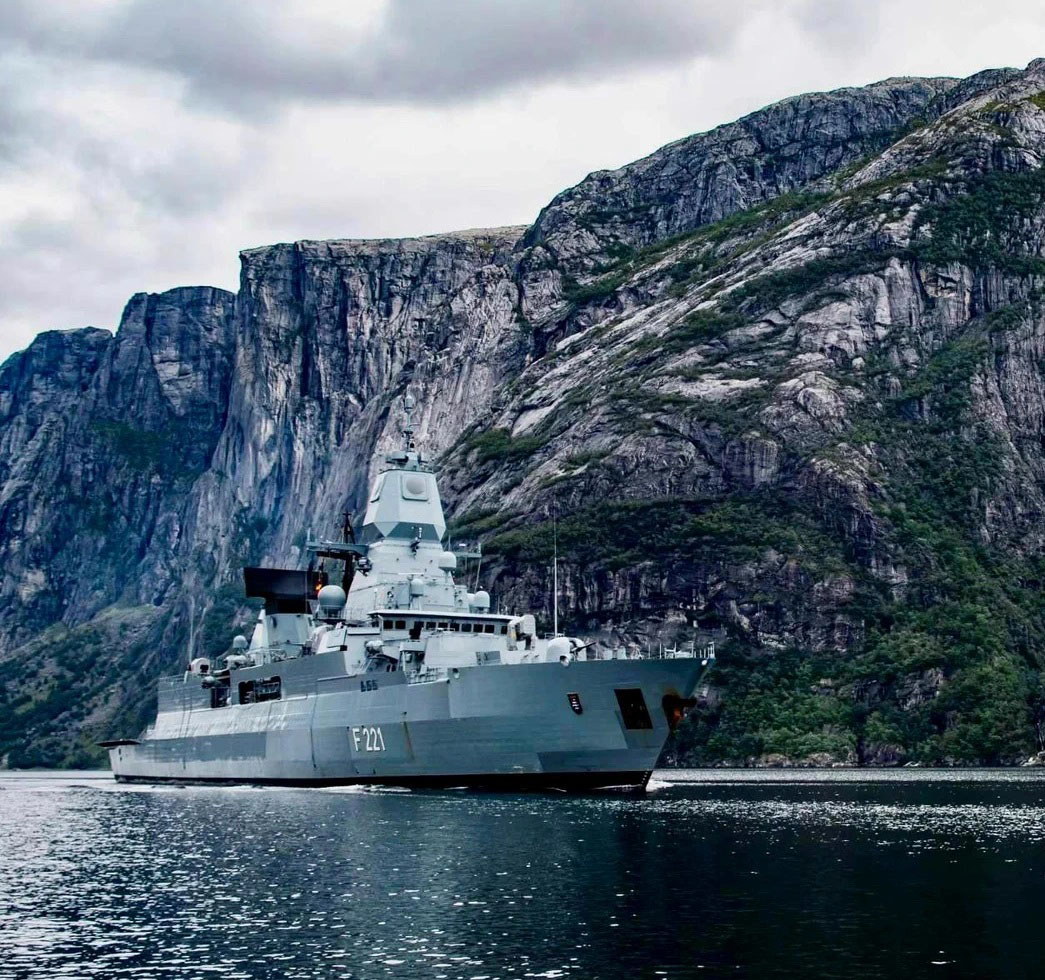 NATO warship conducting maritime operation. (Image Credit: NATO)
NATO warship conducting maritime operation. (Image Credit: NATO)ALSO READ:
Regions
Issues

















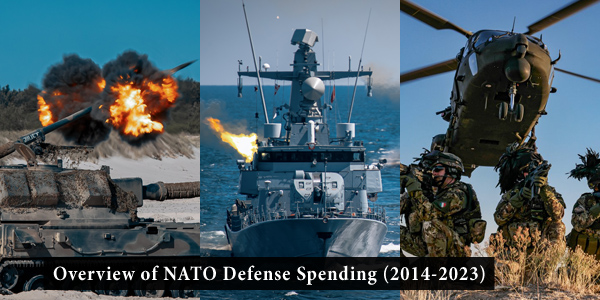 Overview of NATO Defense Spending (2014-2023)
Overview of NATO Defense Spending (2014-2023)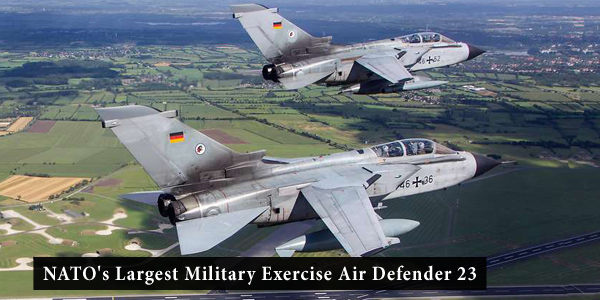 Highlights of NATO's Largest Military Exercise Air Defender 23
Highlights of NATO's Largest Military Exercise Air Defender 23







